Snails in the garden are not uncommon when there is moisture in richly stocked beds. But how do they actually live and what do snails do in winter when the temperatures drop?
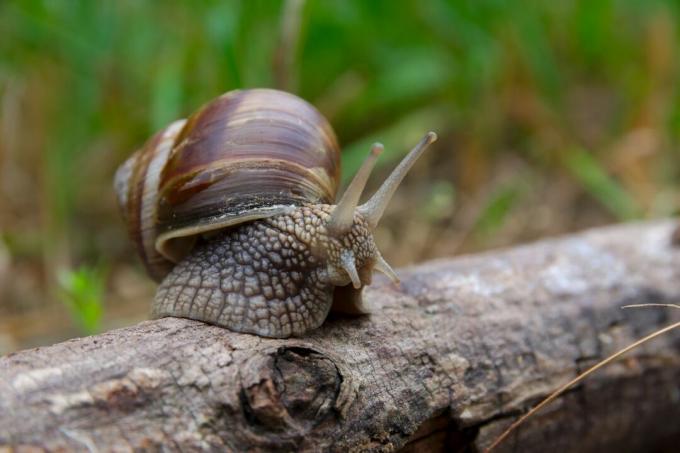
Snails are gastropods (Gastropoda) and within the phylum of mollusks (Mollusca) the only animal class with terrestrial species. With or without a house, they roam our gardens in search of food and hiding places - at a speed of 2 to 7 cm per minute. If a snail made its way from Nuremberg to Munich at an average speed of 4.5 cm per minute, it would take almost 7.2 years without a break. However, since their radius of action is only a few meters around their breeding cavity, a snail will probably never complete this journey.
Contents
- Snails in the garden: Occurrence and way of life
- Where do snails live in the garden?
- How do snails spend the winter?
- What predators do snails have in the garden?
Snails in the garden: Occurrence and way of life
An estimated 250 to 500 different land snail species occur in Central Europe. These live, among other things, in forests, on ruderal areas or in our gardens. Moist gardens with hiding places are very attractive. Widespread slugs are the netted field slug (
Deroceras reticulatum), the Spanish slug (Arion vulgaris) or the tiger slug (Limax maximus). If we encounter snails with a shell, it is probably the banded snail (Cepaea), because it is most widespread in Germany. Larger specimens, on the other hand, could be edible snails (Helix pomatia) be. These are by no means all snails that occur in our country. You can read about other types and what makes each one special in our article on the subject snail species read.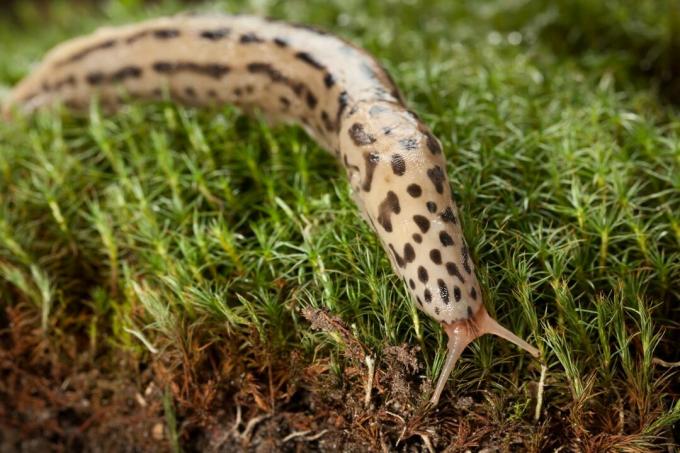
The everyday life of a snail is largely determined by its high water content. It is therefore essential to protect yourself from dehydration. Therefore, snails are mostly nocturnal, they hide during the day in dark, damp and, if possible, warm places. If the snails get too warm and dry, they go into a summer rest. Beginning at dusk, they become active and forage for tasty plants in the garden. More about the nutrition of snails can be found in our separate article.

Half of all known snail species are hermaphrodites. Within the terrestrial pulmonary snails ( Stylommatophora ) all, both shelled and shelled, are hermaphrodite. This means that they form male and female sex organs – sometimes at different times (proterandry). From June, 4 to 6 weeks after successful reproduction, snails lay their eggs in cracks in the ground, in holes in the ground, under planters, overgrown plants or stones. The young snails hatch after 2 to 3 weeks. Most snails develop only one new generation per year.
Tip: Snails hibernate in burrows, snails also close the opening of their house with lime.
The average lifespan of a snail is 9 to 12 months, but theoretically they could live for several years. The early death is usually due to the large number of predators. A Roman snail in a terrarium reached a proud age of no less than 30 years.
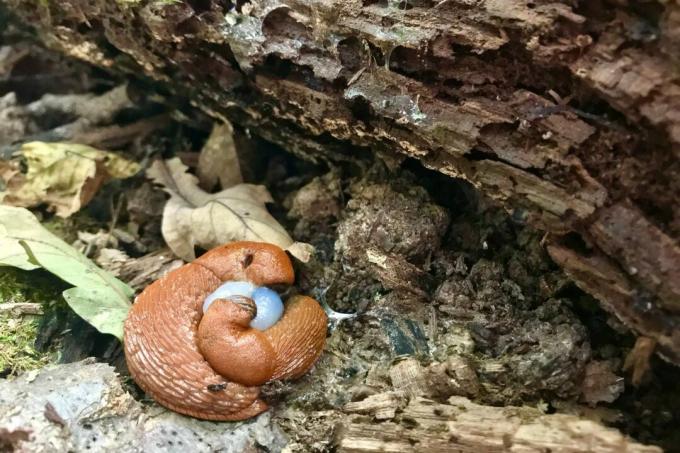
Are there poisonous snails in the garden?
No, so far no poisonous snails have been found in the German garden. The only species dangerous to humans, the cone snail (conidae), lives in the tropical sea.
Where do snails live in the garden?
Pretty much any place that offers a shady, moist and preferably warm hiding place is welcome for the molluscs. During the day, snails in the garden hide in burrows or burrows, under flower pots, in stone cracks or between paving stones, in compost, piles of leaves or in piles of wood. In the evening they crawl into the beds in search of food.
Tip: In the morning you can collect snails from their damp hiding places. Boards can be placed in the bed as such hiding places. So you know exactly where the snails are when you collect them.
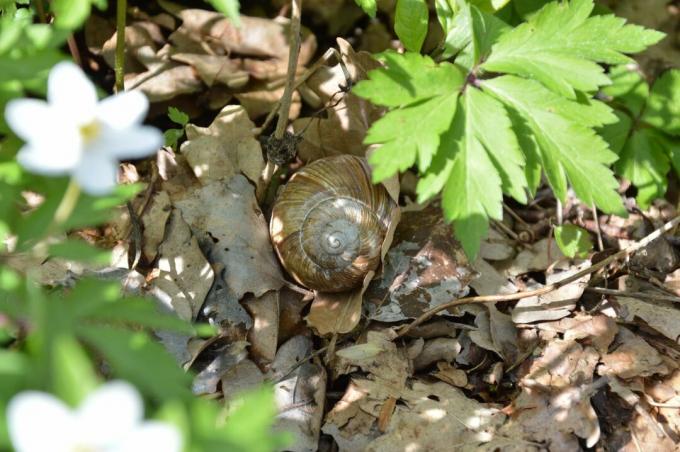
When and how do snails get into the garden?
Snails have a radius of action of a few meters. It is therefore likely that the snails in your garden have already hatched there. In spring, between February and March, the young snails hatch from their eggs. Damp, uncut verges are sources of slugs in the garden. But maybe one or the other snail flew over to you in a high arc from the neighbor's garden. We therefore appeal to everyone to release unwanted snails far enough from gardens.
Tip: A British team of researchers found that when snails are taken at least 20m from where they were found, their instincts are so disrupted that they can't find their way back. It is most effective to resettle the animals outdoors in meadows or at the edge of the forest.
Why do I have so many snails in the garden?
If you have a lot of snails in the garden, it is probably because you have the perfect conditions for breeding and overwintering: safe hiding places and sufficient food. Food plays a special role, as not all plants are consumed equally. Which Plants resistant to snails are, we have summarized them in another article. Also, beer traps are still touted as a slug deterrent. With their intense smell, they motivate even more snails to make unusual efforts and lure them into the garden. If there are no predators such as birds or hedgehogs, there will also be larger snail populations in the garden. It is therefore best to offer these animals good protection options.
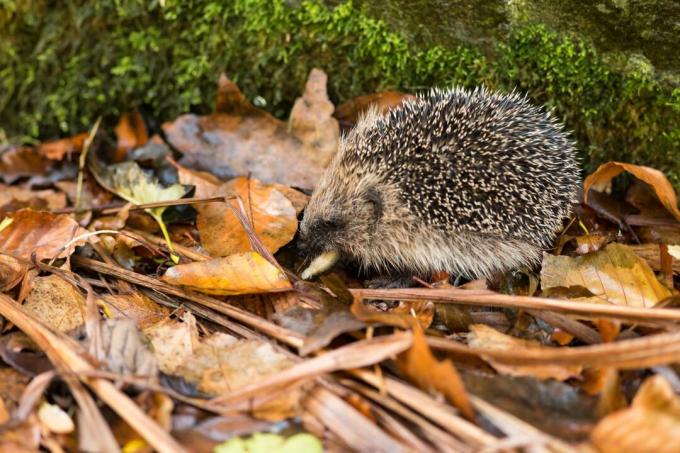
How do I get rid of snails in the garden?
You can look forward to snails. These prefer to eat withered leaves and dead plant parts and are therefore considered beneficial insects. If, on the other hand, you want to get rid of and prevent slugs, you will find the right information in our article on fight snails. One way to permanently eliminate slugs is to use slug pellets represent. Our Plantura organic slug pellets offers numerous advantages over other grains. Since it is based on iron-III-phosphate, it is itself highly dosed, gentle on beneficial insects and also more rainproof.

Organic slug pellets 350 g
- Rainproof & highly concentrated power active ingredient: fights slugs on vegetables & fruit extremely reliably
- Control without traces of slime and dead snails in the bed
- Gentle on pets and beneficial insects - applicable in organic farming
How do snails spend the winter?
Things are looking bad for slugs as early as autumn. Many, but not all, of them die at the onset of the cold season. Before that happens, they lay many eggs in sheltered spots in the ground. Some slug species, but also Roman snails, hibernate. In order to be able to survive the cold winter, the metabolism has to be reduced. This is achieved by the snails lowering their body temperature, causing the organs to work more slowly. If they weren't sleeping, snails would probably experience the winter in slow motion.
Of course, they cannot hibernate in the middle of the bed. From around mid-October, the snails instead crawl into burrows or holes, piles of leaves or stacked wood. They survive the time thanks to a previously eaten layer of fat. Shell snails also close the entrance to their house with a lime cap.
From the end of April, when the temperatures slowly rise, the snails wake up again, become alert, crawl out of their hiding places and rush out in search of food.

What predators do snails have in the garden?
Snails are a feast for many animals. For example, birds, hedgehogs, mice and ducks enjoy a slimy meal. Anyone who creates suitable living conditions for these creatures has helping hands, or rather helping snouts and beaks, in fighting slugs in particular. As hedgehog in autumn support and others Help garden animals through the winter, you will find out in our dedicated articles.
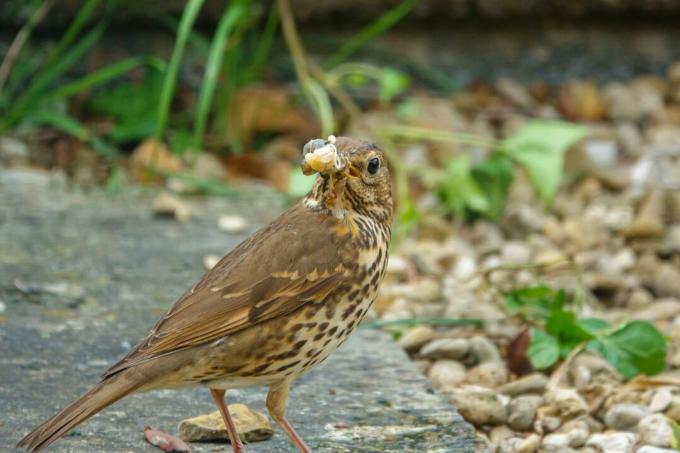
Cannibalism is also common among snails. The Roman Snail (Helix pomatia) eats the eggs of slugs, as does the tiger slug (Limax maximus), which even eats young, live slugs.
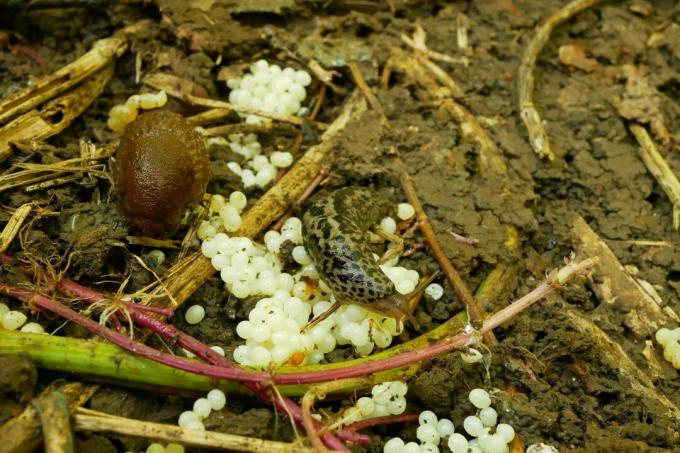
Tip: Did you know that runner ducks are terrible enemies of slugs? For more info, see our article about ducks remove.
If you want to rely on the support of birds against slugs, you should Garden bird friendly design. We show you how it works.
Register now for the Garten-Post and receive great tips, seasonal trends and inspiration on everything to do with the garden from our expert every week.



